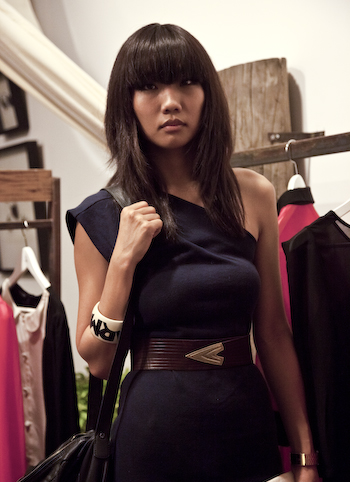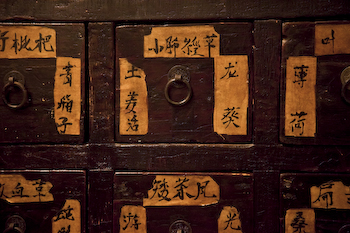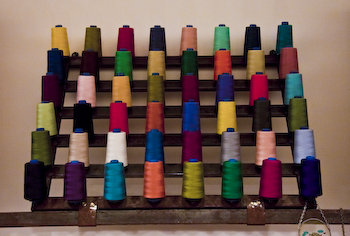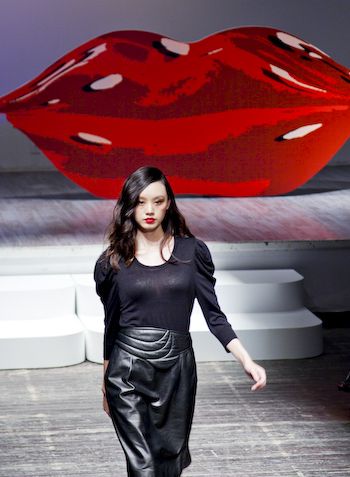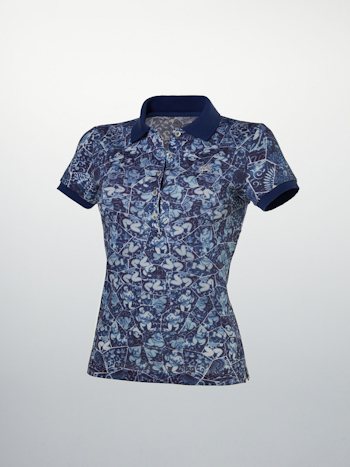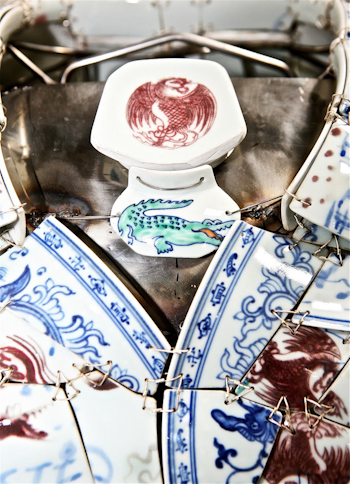Of late, I have been trying to collect a list of Made in China luxury brands. There are not a huge number. This latest edition, Shang Xia (上下)from what industry experts describe as the lone “honest” luxury brand, Hermès, might change perceptions and usher in a new era. Hopefully, after this local brands will gain a deeper appreciation for quality and the importance of painstaking local craftsmanship. Our friends over at Jingdaily have more.
Tag: China Fashion News and Analysis ä¸å›½æ—¶è£…æ–°é—»åŠè¡Œä¸šåˆ†æž
News about China’s fashion market and industry, including reports on factory visits, events, etc.
To the Lower Tiers!
While Zara, Uniqlo, and H&M race to dominate Beijing, Shanghai, Guangzhou and other cities that you have heard of, Forbes reports that local fast fashion brands like ME&CITY and URBANEIGHTDAY are expanding even more rapidly in second, third and forth tier cities. Interestingly, these brands are relying on Western “it” celebrities for their marketing. I must confess that I have not been to the shops of any of these brands. I believe there is a ME&CITY in Xidan.
A Top China Blog
Thanks to Jing Daily for including me in its list of the top five China fashion bloggers. Amusing that beyond being the only non-Chinese on this list, I am the only male. This story was picked up by the Business of Fashion and The New York Times Fashion and Style Section.
Global Times and CIB on Li Xiaofeng
The Global Times just did an article on Li Xiaofeng’s cooperation with Lacoste and the Porcelain Polo, for which I was consulted. My piece on this in China International Business also appeared recently. Check two pages back on Stylites for the posts in which I cover Li Xiaofeng, Lacoste and the 2010 Holiday Collector’s Series.
25 Top People in China Fashion Industry
Here, from Forbes, is an interesting slide show of the most important figures in the Chinese fashion industry. Xander Zhou is the only one on the list who has been on Stylites. I don’t know if “fashionista” is the right word for most of these people.
ç¦å¸ƒæ–¯æœ€è¿‘å‘布了一则ä¸å›½æ—¶å°šç•Œäººå£«æŽ’行榜。曾在Stylites出现过的人ä¸ï¼Œè®¾è®¡å¸ˆXander Zhou是唯一一ä½ä¸Šæ¦œäººå£«ã€‚我ä¸çŸ¥èƒ½å¦ç”¨”Fashionista” (æ„为“时尚狂人â€) æ¥æ述他们这些人。
Will Luxury Customers get Taste?
This article discusses the possible two-pronged approach that luxury companies will have to take to customers in Western and Asian markets. Apparently Chinese, Japanese, and Middle Eastern buyers are not terribly excited about logo-less bags.
At the Vega Wang Media Opening
Photos by Teresa Yeh
The sparkling rosé was quite nice. Madame Figaro editor Zhang Shen was among the glamorous media guests, but she was drinking water out of a champagne flute. She had to head back to the office after the party.
Details Count for Vega
Photos by Teresa Yeh
Just count the details. Fashion designer Vega Zaishi Wang thoughtfully considers the tasteful little touches in all parts of her life including music, elixirs, and of course the cuts of the garments she creates. This 1930s radio, produced in Shanghai by a company called Panda, and the other decor in her first Jianwai Soho shop, just opening this week, are a testament to her quirky, distinctive style. The well-curated, compact space is comfortable and airy with high ceilings resulting from gutting of the second floor.
æ—¥å‰ï¼Œæ¯•ä¸šäºŽä¼¦æ•¦ä¸å¤®åœ£é©¬ä¸è‰ºæœ¯è®¾è®¡å¦é™¢çš„ä¸å›½æ–°é”独立设计师,王在实Vega Wang,在北京建外Soho,开设了第一家其自主å“牌的精å“店。店内的精巧设计与装潢,就åƒå¥¹çš„手工æˆè¡£ä¸€æ ·ï¼Œæ˜¾çŽ°å‡ºå¥¹æœ¬äººç²¾çµå¤æ€ªã€ç‹¬å…·é£Žæ ¼çš„特色。当北京的众多时装店还在用å¤è‘£å’Œå„ç§æ··æ‚ä¸å ªçš„装饰时,Vegaå´ç”¨å¤é›…别致的装潢托显出其设计å“的时尚与å‰å«ã€‚è€å¼ç¼çº«æœºã€æ‚¬äºŽçª—上的木质å“ã€ä»¥åŠæŽ’列在长凳上的å„色线轴,都激å‘ç€é¡¾å®¢ä»¬æƒ³åœ¨è¿™é‡Œå®šåˆ¶æœè£…的欲望。
Golden Delicious: Candy Lin
California-bred Candy Lin, designer of Candy and Caviar, dishes on the inspirations behind her newest line, and her ambitions for reaching the world through fashion design — starting with bases in L.A. and Beijing. Stylites contributors Marilyn Mai Ong (English) and Renee Liu (Chinese) wrote this profile of Candy.
åŠ å·žé•¿å¤§çš„Candy Linä¸åŠ 客套的与我们èŠèµ·å¥¹æ–°ä¸€å£è®¾è®¡çš„çµæ„Ÿï¼Œè¿™ä¸ªå¥³å©æœ‰å…³ç”¨æ—¶è£…å¾æœä¸–界的梦想,开始于洛æ‰çŸ¶å’ŒåŒ—京这两个城市。
EQ:IQ – A Touch of Dali – Paris, and Probably Beijing
The backdrop for Hong Kong brand EQ:IQ‘s F/W 2010 RTW Show held at the possibly notorious Yan Club in 798 couldn’t help but remind me of the Mae West Lips Sofa by Salvador Dali. The lip motif also appeared in the “Bisous†lip patterned tote and evening bag and in the cardinal red of the lipstick on the models.
Yet the real inspiration for the collection was the home of Creative Director Stephanie Stindel, the City of Light. While hardly a novel place from which to draw inspiration for a fashion collection, one can never really tire of fantasizing about strolls through the Jardin du Luxembourg (or shopping sprees around Place Vendôme). Girls from grayer, murkier towns ought still to mimic Les Femmes de Paris (that was the name of collection) and this appealing array of garments might be one point to start in this pursuit.
China – A Chance for European Designers?
Finally, I have a spare moment to mention my experience on the “China – A Chance for Young European Designers” panel in Berlin.
A growing number of foreign fashion designers are landing in China. History’s greatest economic miracle now might provide both markets for foreign brands and employment for foreign talent. This latest generation of foreigners focused on China is young, based here rather than overseas, and sees its future with Chinese companies as this market continues to expand.
我终于有空æ¥å†™åœ¨æŸæž—å‚åŠ çš„ä»¥â€œä¸å›½–年轻欧洲设计师的舞å°â€ä¸ºä¸»é¢˜çš„ç ”è®¨ä¼šäº†ã€‚
越æ¥è¶Šå¤šçš„外国设计师开始在ä¸å›½è½è„šäº†ã€‚ä¸å›½ï¼Œè¿™æ ·ä¸€ä¸ªåŽ†å²ä¸Šç»æµŽçš„奇迹,å‘外国å“牌æ供市场也为外国设计师们的天赋æ供舞å°ã€‚最新的一批年轻的外国设计师选择在ä¸å›½æ‹“宽市场,展望他们的未æ¥ã€‚
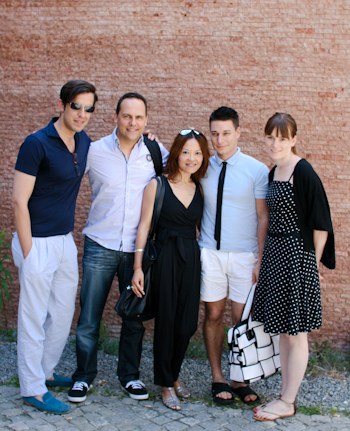
For Poor Bums who can’t Afford a Real Panda
Wondering what on earth these creatures are? Originally dogs, they were displayed to the public by pet beauty salons recently in Zhengzhou, Henan Province.
It might not be incredible that in China pursuit of fashion could be transfered to pets in such an amusing way. When the UK’s Dailymail found these pictures they were startled and comments from readers connected this to China’s record for animal cruelty. How could one not mention that Chinese like eating dogs?
看得出æ¥è¿™äº›å°åŠ¨ç‰©ä»¬æ˜¯ä»€ä¹ˆä¹ˆï¼Ÿå—¯ï¼Œä»–们是狗,6月份时在河å—郑州被æŸå®¶å® 物美容院对外展出。好åƒä»»ä½•æ€ªå¼‚的事在大陆总是能迅速æµè¡Œã€‚
Love for Li Xiaofeng
As I’ve been involved with the Li Xiaofeng/Lacoste project since the start, I take a keen interest in observing the media response, particularly from other websites. Jing Daily picked up my coverage of the story. Interview Magazine carried a more in-depth piece called “Li Xiaofeng for Lacoste: The Armored Crocodile” and Yatzer included an interview. The T Magazine blog also mentioned Li and soon Hypebeast, Trendhunter, Maison Chaplin, High Snobiety, Slamxhype, Dinosaurs and Robots and ulike.net carried the story. Next, I will put an update about coverage from the China and global print media.
The Cotton Porcelain Polo
Porcelain Polo Details
Amidst the countless details on the porcelain polo, the most centralis the point where the pheonix meets the crocodile above the collar. Li Xiaofeng points to this as a point where the emblems of East and West meet. The Lacoste logo represents the West and the pheonix is a traditional symbol of imperial China.
I think that when considering this piece – especially as a commentary on the Lacoste logo – it helps to remember its predecessor: last year’s super-limited edition Campana Brother’s polo, of which there are 24 in the world. As comentaries on branding and logos, how do these compare?
